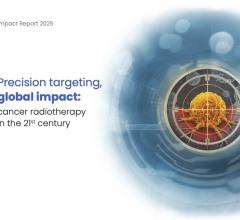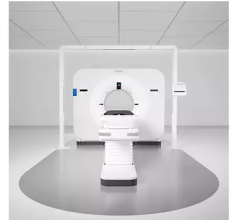
July 31, 2016 — Modus QA updated its Quasar MRID3D with faster isocenter detection, improved fiducial markers, convenient alignment crosshairs and additional visualization tools, improving its lightweight, large field of view MRgRT QA Phantom.
Featuring an acrylic hollow twin cylinder wall enclosure, Quasar MRID3D now contains 1,502 precisely machined fiducial markers with six larger central reference fiducials for robust detection when imaging SNR is low or distortion is high i.e. while vendor geometric distortion correction is turned off. The system uses a sophisticated 3-D DICOM viewer with ROI selector, which takes geometric distortion analysis to a higher level with the ability to update charts and graphs in real-time to gain further insights. The ergonomic phantom is designed with built-in three point contact feet for quick set-up on uneven surfaces and integrated handles for convenient handling.
The system aids next generation LINACs with its quick and easy set-up, fast scan times, simple workflow and rapid calculations of results. The updated Qausar MRID3D features enriched analysis tools making it easier to examine the geometric distortion measurements of a single acquisition or compare the distortion among a collection of images. Interactive statistical graphics empower users to explore, discover, summarize and visualize quantitative data in the way they see fit to form conclusions and make decisions.
Now with automated processes to identify location of control points, calculate distortion vector fields, quantify geometric distortion and produce statistical analysis, the system is a good phantom for MRI QA. It comes with easy-to-use image analysis software to perform complex calculations and execute elegant algorithms to calculate the phantom boundary distortion vector field, volumetric 3-D distortion vector field and B0 distortion vs. gradient distortion.
Following the introduction of custom settings, the analysis software feature list continues to grow, giving users added flexibility and capabilities to display data their way by adjusting threshold settings, regions of interest, image viewer properties, graphic display resolution, plot line colors and database configurations.
The 21 kg pre-filled Quasar MRID3D acrylic phantom measuring 39.4 cm diameter by 39.1 cm long comes complete and ready to use with analysis software for quantifying geometric distortion MR images in 3-D.
For more information: modusqa.com/imaging/phantoms/mrid3d


 December 11, 2025
December 11, 2025 









